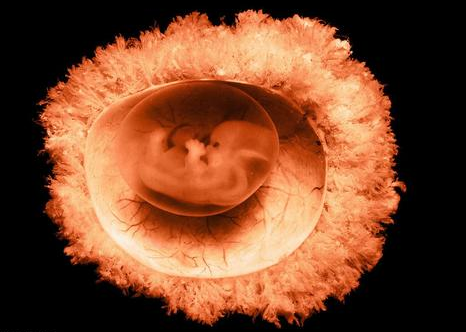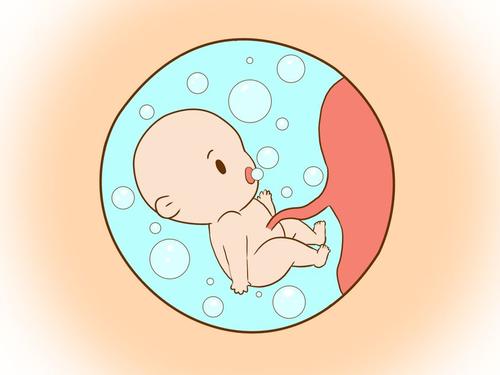胎儿样本现在用得最多的两种是胎儿羊水,和胎儿绒毛,还有一种是无创静脉血采集的是孕妇的血液详情可直接点击《无创亲子鉴定》
The two most commonly used fetal samples are fetal amniotic fluid and fetal villi, and the other is non-invasive venous blood. The blood collected from pregnant women can be directly click on "noninvasive paternity test"
胎儿羊水需要穿刺采样,名叫:羊膜穿刺术,是传统的胎儿亲子鉴定方式的一种;
Fetal amniotic fluid needs to be punctured and sampled, called amniocentesis, which is one of the traditional methods of fetal paternity testing;
什么是羊水穿刺亲子鉴定?
What is amniocentesis paternity test?
胎儿羊水亲子鉴定是孕妇产前做的亲子鉴定,是指宝宝还在妈妈肚子里面,通过羊水穿刺的方法抽取羊水进行DNA鉴定,检测胎儿和怀疑对象(父亲)是否存在父子关系。
Fetal amniotic fluid paternity test is a kind of paternity test done by pregnant women before delivery. It refers to that when the baby is still in the mother's stomach, amniotic fluid is extracted for DNA identification by amniotic fluid puncture, and whether there is father-child relationship between the fetus and the suspected object (father).
羊水穿刺几周做比较安全?
How many weeks is amniotic fluid puncture safe?
一般需要在17-26周之间,这个时候胎儿比较小,而羊水相对比较充足,宝宝在羊水中,四周有比较宽的样水带,穿刺采集羊水的时候,不容易伤到宝宝;
Generally need between 17-26 weeks, this time the fetus is relatively small, and the amniotic fluid is relatively sufficient, the baby in the amniotic fluid, around the relatively wide sample water belt, puncture collection of amniotic fluid, not easy to hurt the baby;
胎儿羊水亲子鉴定的步骤和手续?
The steps and procedures of paternity test of fetal amniotic fluid?
1、在正式采样前,先照B超,确认胎儿大小以及怀孕周数,胎儿的位置和观察胎儿数目;
1. Before the formal sampling, B-ultrasound was used to confirm the size of the fetus, the number of gestational weeks, the position of the fetus and the number of fetuses;
2、找到合适的穿刺位置;
2. Find the right puncture position;
3、为宝妈皮肤进行消毒;
3. Disinfect the skin of Baoma;
4、在宝妈肚子上铺上医疗无菌单子;
4. Spread medical sterile list on Baoma's stomach;
5、以20或者是22号穿刺针在超生波的引导下,逐步刺入之前选好的穿刺位置;
5. Under the guidance of ultrasonic wave, 20 or 22 puncture needle was used to puncture into the selected puncture position;
6、确认刺针已在羊膜腔内,开始以负压将羊水抽出;
6. It was confirmed that the needle was in the amniotic cavity and amniotic fluid was extracted with negative pressure;
7、前面2毫升羊水不能要(怕引起母源细胞污染);
7. The first 2 ml amniotic fluid can not be (afraid of causing maternal cell pollution);
8、大约抽出15-18毫升的羊水;
8. Draw about 15-18 ml of amniotic fluid;
9、将穿刺针的内管置回;
9. The inner tube of the puncture needle was put back;
10、回抽整支穿刺针;
10. The whole needle was withdrawn;
11、在肚皮的针孔上贴上绷带请孕妇在羊水检查室外稍坐休息30分钟,若无不适就可以回家了。
11. Put bandage on the pinhole of the belly, ask pregnant women to sit outside the amniotic fluid examination room and have a rest for 30 minutes. If there is no discomfort, they can go home.
羊水穿刺风险:羊水穿刺主要风险就是流产从国内医院数据显示有0.5%-2%的几率会造成胎儿流产,所以需要留意术后的24小时,不能洗澡,半个月不能有性生活避免!
Risk of amniocentesis: the main risk of amniocentesis is abortion. According to domestic hospital data, there is a 0.5% - 2% chance of fetal abortion, so you need to pay attention to the 24 hours after surgery, you can't take a bath, and you can't have sexual life for half a month!
什么是绒毛亲子鉴定?
What is villous paternity testing?
通过穿刺技术采集胎儿绒毛,从采集绒毛中提取DNA细胞,检测到胎儿的DNA并与疑似父亲DNA样本对比,得出是否存在父子关系。
Through the puncture technology to collect fetal villi, DNA cells were extracted from the collected villi, fetal DNA was detected and compared with the suspected father DNA samples to find out whether there is a paternity relationship.
绒毛穿刺亲子鉴定几周做安全?
How many weeks is villus puncture paternity test safe?
适合8-14周采集,这个时候胎儿发育周边形成保护囊,在保护囊上面附着的就是绒毛,这时候绒毛比较多,不容易伤害的胎儿;
Suitable for 8-14 weeks of collection, at this time, the development of the fetus around the formation of a protective capsule, in the protective sac attached to the villi, at this time more villi, not easy to hurt the fetus;

绒毛采集相关流程
Fluff collection process
1、做好相关B超检测,确认好胎儿周期,以及检测绒毛的浓密程度;
1. Do a good job of B-ultrasound detection, confirm the fetal cycle, and detect the density of villi;
2、找到合适的穿刺位置;
2. Find the right puncture position;
3、为宝妈消毒
3. Disinfect Baoma
.....基本与羊水穿刺类似,请看以上参考!
... basically similar to amniocentesis, please see the above reference!
绒毛穿刺风险:抽取绒毛做胎儿亲子鉴定,不会导致胎儿畸形、智障等,但有可能造成胎儿宫内感染,并且绒毛穿刺有0.5-1%的流产率;
Risk of chorionic villi puncture: the extraction of chorionic villi for fetal paternity test will not lead to fetal malformation, mental retardation, but may cause intrauterine infection, and the abortion rate of chorionic villi puncture is 0.5-1%;



